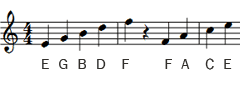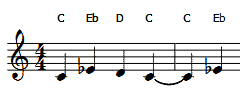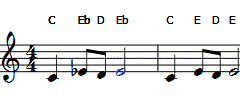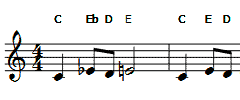Notes
The notes are named from A to G and then repeat. Different clefs have the notes in different places, but the A to G pattern remains the same.
Treble Clef


Bass Clef

Tenor Clef
For the tenor and alto clefs, notice that "middle C" is located on the line at the center of the clef.

Alto Clef

Sharps, Flats, & Naturals



Accidentals

Accidentals are notes that are not included in the key signature. Don't worry, we'll learn about key signatures next. For now, just know that the key of C has no naturally occuring sharps or flats, so if you see a sharp or a flat in this key you know it's an accidental.
Key Signatures & Notes
Some notes are automatically sharp or flat because of the key signature. For example, the key of F has one flat (B flat). All of the B notes are automatically flat because of the key signature. There's no need to write a flat next to those notes.

The natural sign allows us to turn the naturally occuring flat or sharp back into the regular note name. For example, in the key of F we could change the naturally occuring B flat into a B by using the natural sign.

If an accidental is used, it applies to the rest of the measure.

If you only wanted the accidental to apply to one note and not the rest of the measure, you can add natural signs to the rest of those notes in the measure.

Practice
To practice, feel free to use the two corresponding quizzes (Notes on the Treble Clef and Notes on the Bass Clef).
It might be even better to practice by going through a piece of music and writing down all of the note names. Then compare your answers to the images in this tutorial. Even better, you could practice saying the note names out loud in rhythm or practice singing the note names on the correct pitches to combine rhythm and ear training.
At this point, it would also be a good idea to start practicing the rhythm and ear training tutorials along side the music theory tutorials. Building on each area simultaneously should help strengthen your overall knowledge and help you connect the dots more easily.
